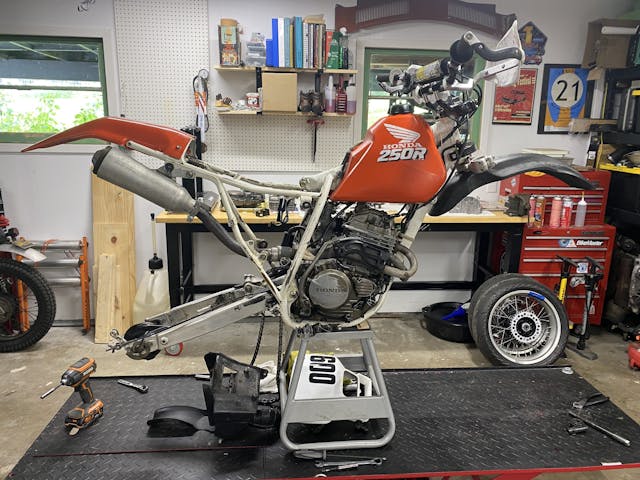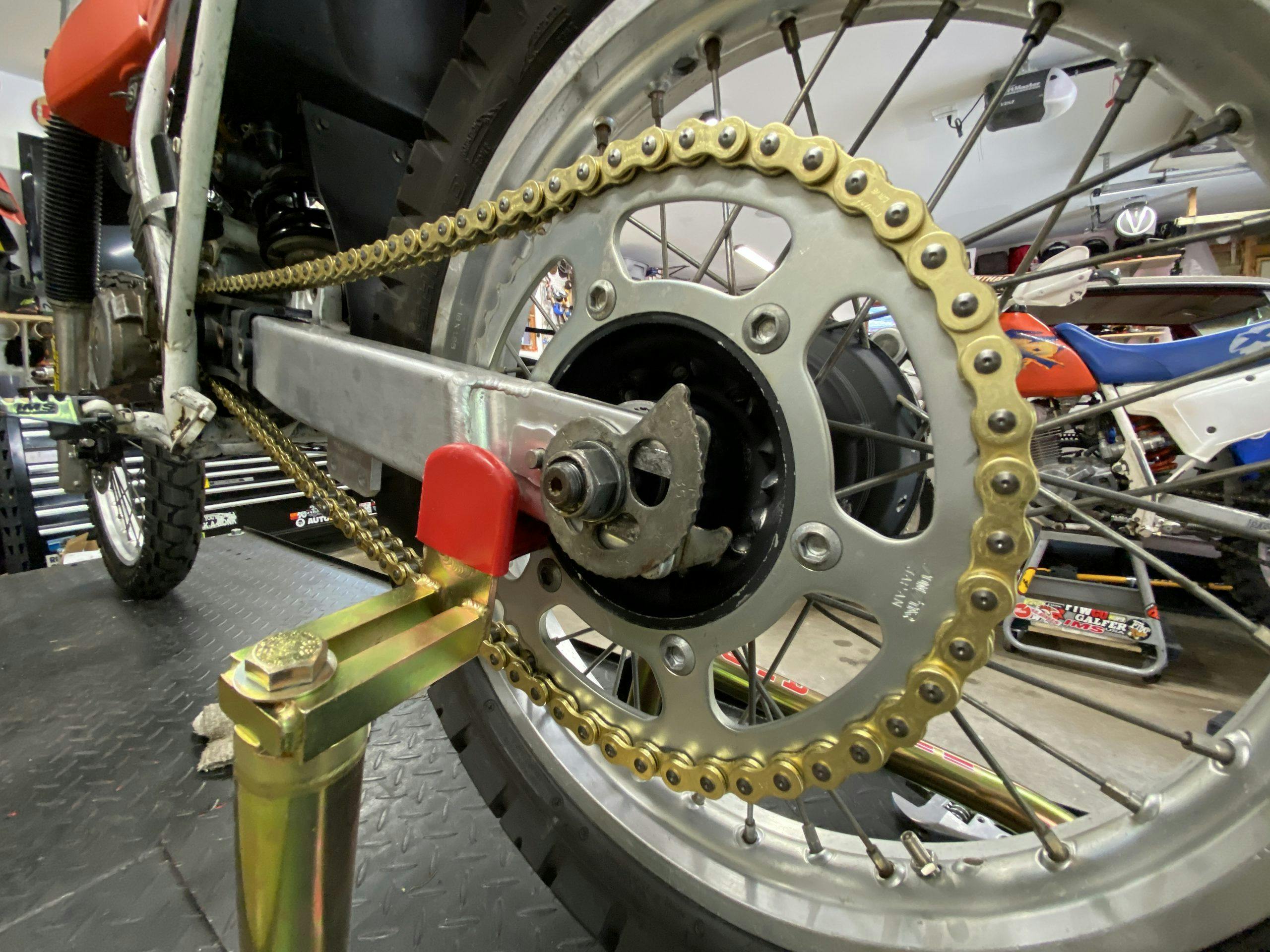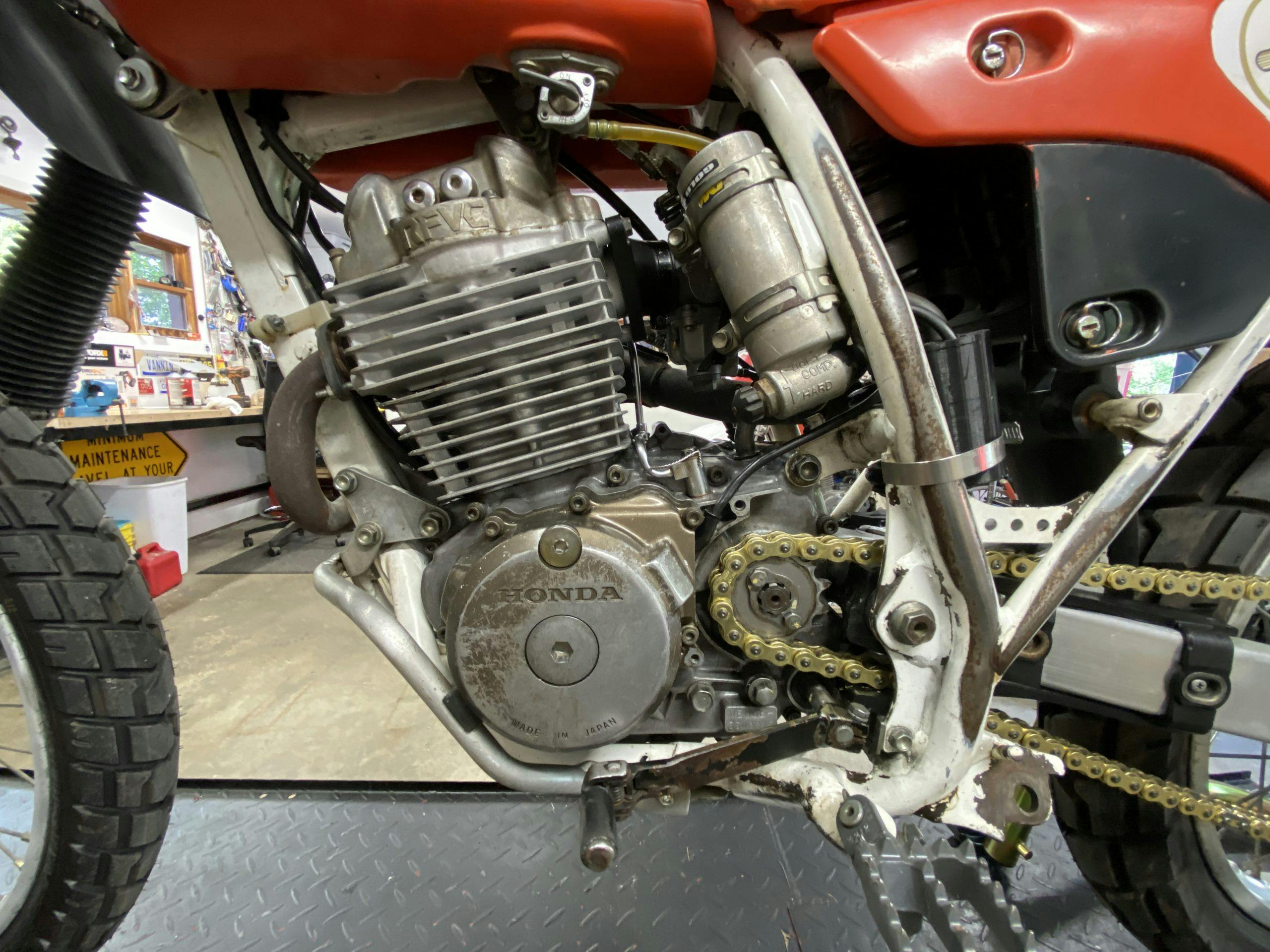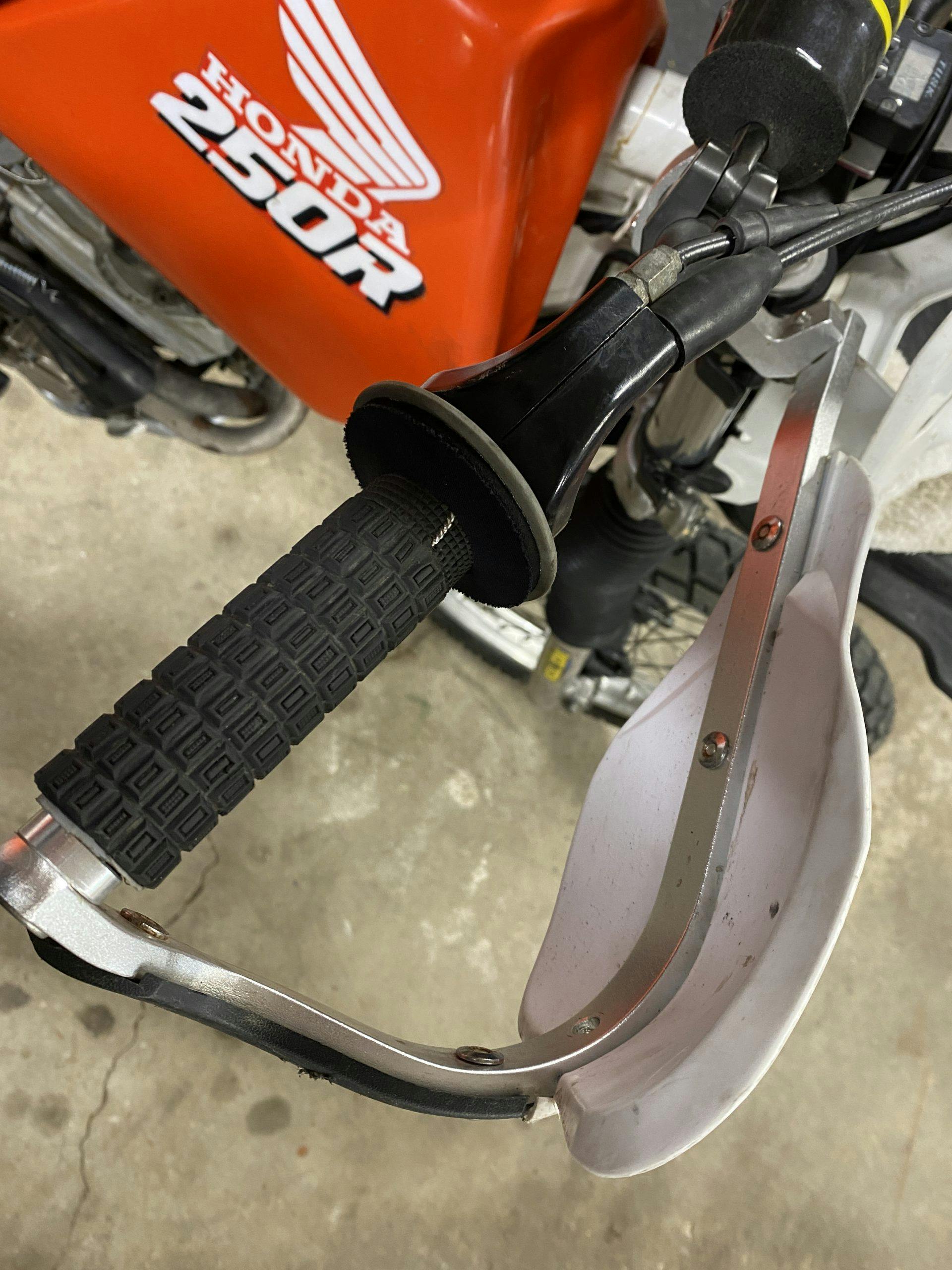Six Ways to Sunday: Preparing for return to dirt
Off the track and straight onto the lift in the garage. One of the interesting parts of my six-discipline racing project is that my poor Honda XR250R spends far more time being worked on than actually racing. No matter, that is part of the fun. Working on this machine only serves to build anticipation within me for each event, and it provides place for me to mentally reset as my skills grow. The next item on the Honda’s docket is one that I have dabbled in before but never took especially seriously. Let the record show that I tend to prefer events with both left and right turns. (Brakes are nice, too.)
That’s right, I’m going flat track racing.
My first move was to remove the road race motard setup, but ahead of that I spent some time studying the flat track rulebook. This discipline of racing is pretty simple at its core, but that doesn’t mean the machines aren’t highly specialized. Races are held on tracks varying from 1/8th-mile to a full mile in length. Those long tracks are crazy-high-speed and require serious skill to run at speed. I don’t have that skill just yet, so I’ll be sticking to the short track at first.
The race surface is a tight-pack dirt, and the track consists only of left turns. In this realm, bikes are often powered by factory engines that have been transplanted into hand-built frames with geometry specific for flat track. Steep steering angles, short wheelbase, and low center of gravity put weight on the front tire to help with direction change, while allowing for predictable slides under braking. A lot of newbies in the flat track world see the slides and think that riders are powersliding and drifting out of the corner; in fact it is the rear tire that steps out under braking. Drifting is the slowest way around a flat track. Remember—if your rear tire is spinning, you are leaving speed on the table.
The rulebook notes only a few rules for fitting into the vintage lightweight class: no front brake, engine under 350 cc of displacement, and no knobby tires. Easy enough for me and my Honda. Grab the wrenches. Off comes the sticky motard tires and 17-inch wheels, then the stiff RaceTech tuned suspension. Finally, the front brake master cylinder, lever, and line. Back on went the off-road tuned suspension. Then I needed wheels and tires, which presented an odd obstacle.
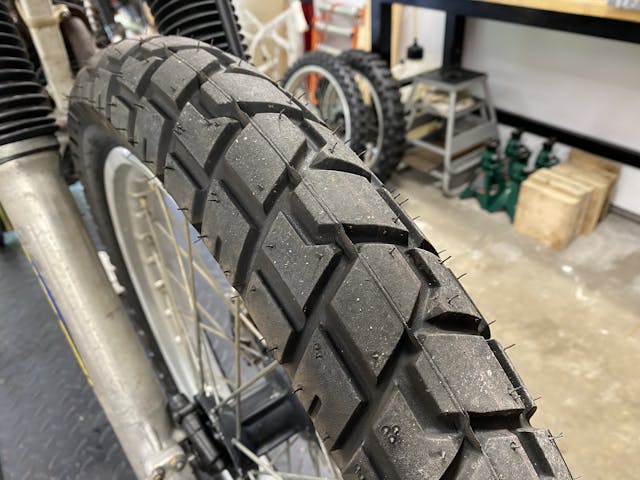
In flat track racing, 19-inch wheels are nearly ubiquitous and thus any race tire I might be interested in was only sized for a wheel I didn’t have. Sure, I could have laced up another set of wheels, but it was not strictly necessary or mandated like it was for the motard road race setup. I’m not on the tightest of budgets, but cost is a factor in the back of my mind. If I can get away with running the stock 21-inch front and 18-inch rear wheels, I will.
Rearranging some parts I had stored outside yielded my solution. A set of blocky tread pattern dual sport tires already mounted to a spare set of wheels appeared from the depths of a pile of “spare parts.” The rear had a hole in the inner tube, but that was an easy fix.
Next step: mount all those parts up, plus the general maintenance of an oil change, air filter cleaning, and general once over took a couple weeknights of work. Not bad. My beloved XR250 will not be a competitive bike with its tall suspension and less-than-ideal tires, even at the small race I am headed to at Pine Lake Raceway in Ohio. That is just fine by me. Much more than where I finish, I am curious how much of my time learning to slide at American Supercamp will manifest itself when I take to the track for practice.
The rear drum brake barely got used while I went road racing, but with the required removal of the front for flat track, now is also the time to ensure that the drum is working the best it can. I gave it fresh shoes, greased all the pivots, and adjusted it perfectly so it will supply maximum braking force–which is still not great if I’m being honest. This might be tied to the tired out hub on this particular wheelset, but I think it should serve valiantly for one race before being downgraded to commuter duties.
All said, it was a fairly painless prep this go around. Off into the van it goes. Later this week I will be driving eight hours to go racing once more. I expect to have a good time. Folks have told me that the track prep at Pine Lake is particularly good. That will help me some, but it’ll probably help well-prepared competition even more. Come back next week to see how I fare.
